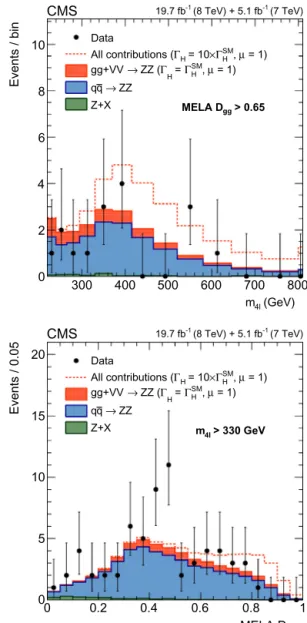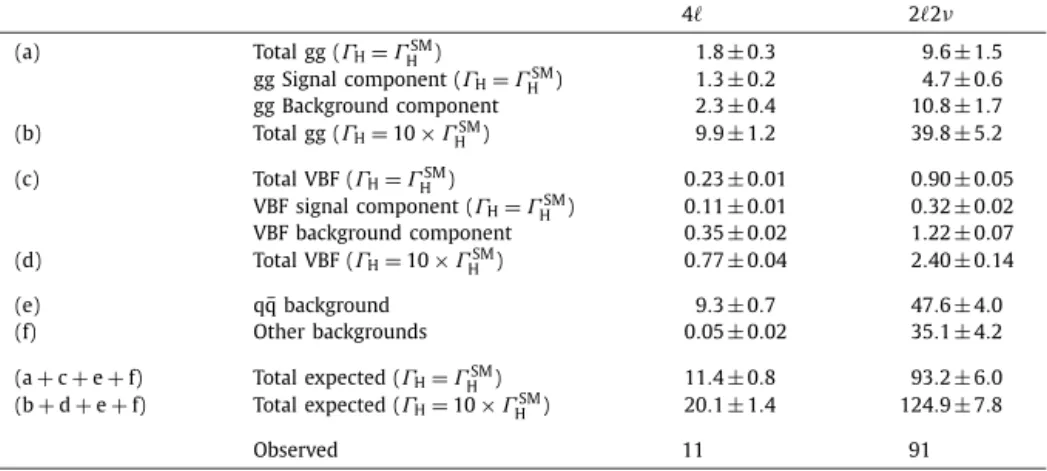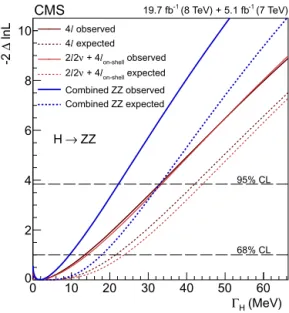Constraints on the Higgs boson width from off-shell production and decay to Z-boson pairs
Texte intégral
Figure




Documents relatifs
It aims at studying the constraints that can be set on the SUSY parameters space using the most recent experimental constraints known today: mainly the Higgs mass, and the cold
Assuming a specific SUSY model, the fundamental parameters (driving the mass spectrum) can be constrained:.. - either by direct searches
In the current paper, we study another potentially important contribu- tion to the Higgs searches background, which has not been entirely taken into account in the ATLAS and CMS
Viewed in a simplified way, the analysis leading to the discovery of a new particle starts with the acquisition of experimental data; then a classifier is used to determine
Meanwhile, the next major Atlas release is being prepared, which includes significantly improved re- construction algorithms, more accurate simulation to fix discrepancies observed
In conclusion, theoretical arguments and experimental evidence ensure that no particles of the standard model are fakeons, apart from possibly the Higgs boson and the top quark,
This problem arises naturally in the numerical implementation of the controllability and observability properties of the continuous wave equation but is of indepen- dent interest in
★ La brisure spontanée de symétrie (par construction) donne masse aux bosons et aux fermions via l’interaction avec le boson de Higgs. spoiler alert: pour commencer, on va